Long-Term, Low-Cost Remediation of Chlorinated Solvents
 3-D Microemulsion® is an injectable electron donor optimized for low cost, long-lasting in situ remediation of chlorinated solvents. Its engineered, wide-area subsurface distribution significantly reduces the number of injection points and events required, resulting in time and cost savings. A viable, long-term source of staged-release hydrogen on the order of 2-4 years from a single application, this technology is faster and often lower cost than lengthy natural attenuation approaches. 3-D Microemulsion® is an injectable electron donor optimized for low cost, long-lasting in situ remediation of chlorinated solvents. Its engineered, wide-area subsurface distribution significantly reduces the number of injection points and events required, resulting in time and cost savings. A viable, long-term source of staged-release hydrogen on the order of 2-4 years from a single application, this technology is faster and often lower cost than lengthy natural attenuation approaches.

A Liquid Iron Based-Reagent for the Enhanced In Situ Chemical Reduction (ISCR) of Chlorinated Contaminants
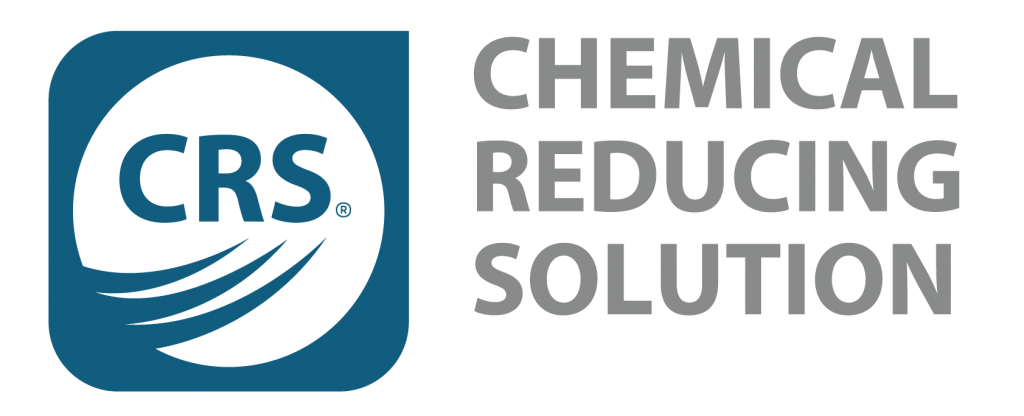 CRS® (Chemical Reducing Solution) is an iron-based amendment for in situ chemical reduction (ISCR) of halogenated hydrocarbon contaminants such as chlorinated ethenes and ethanes. This highly efficient in situ remediation technology contains a form of liquid iron which provides better distribution than can be achieved by directly injecting a solid iron material into the subsurface. The product allows for seamless integration with anaerobic bioremediation, and is easy to apply with the electron donor 3-D Microemulsion. CRS® (Chemical Reducing Solution) is an iron-based amendment for in situ chemical reduction (ISCR) of halogenated hydrocarbon contaminants such as chlorinated ethenes and ethanes. This highly efficient in situ remediation technology contains a form of liquid iron which provides better distribution than can be achieved by directly injecting a solid iron material into the subsurface. The product allows for seamless integration with anaerobic bioremediation, and is easy to apply with the electron donor 3-D Microemulsion.

Accelerated Treatment of Intermediate Compounds
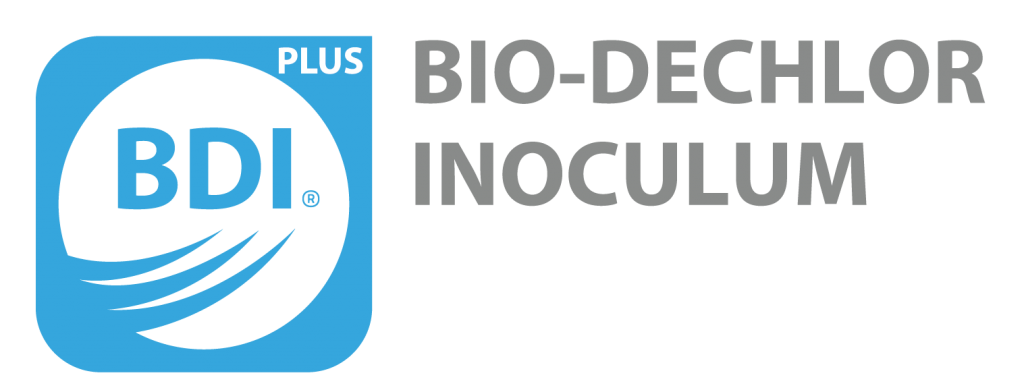 Bio-Dechlor INOCULUM® Plus (BDI Plus) is designed to provide rapid and effective treatment of undesirable anaerobic dechlorination intermediates such as dichloroethene (DCE) and vinyl chloride (VC), and is a low-cost means of enhancing the anaerobic biodegradation process. Once in place, this microbial consortium accelerates the rate of chlorinated contaminant degradation from parent compounds to intermediates like DCE and VC and completely through to harmless end products such as ethene and ethane. It is highly compatible with a range of electron donors. Bio-Dechlor INOCULUM® Plus (BDI Plus) is designed to provide rapid and effective treatment of undesirable anaerobic dechlorination intermediates such as dichloroethene (DCE) and vinyl chloride (VC), and is a low-cost means of enhancing the anaerobic biodegradation process. Once in place, this microbial consortium accelerates the rate of chlorinated contaminant degradation from parent compounds to intermediates like DCE and VC and completely through to harmless end products such as ethene and ethane. It is highly compatible with a range of electron donors.

Client Spotlight: Matt Hall, Senior Engineer and Senior Project Manager at Terracon
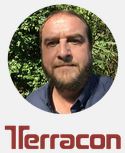 For Matt Hall, Senior Engineer and Senior Project Manager at Terracon Consultants, Inc., a leading environmental consulting and engineering firm and valued REGENESIS client, choosing a career in environmental remediation started with an interest in cleaning up our environment., Once he became immersed in his studies however, he quickly became passionate about the “how-to” aspects that drive the science behind remediation. Shares Hall, “My initial interest soon morphed into a fascination with understanding the science behind the products and the engineering design for remediation implementation.” Eventually, Hall’s commitment to the earth’s environment lead to earning a dual bachelor’s degree from Tulane University in Ecology, Evolution, & Organismal Biology (EEOB), and Environmental Studies. After graduation, he worked as a staff level professional at an environmental engineering firm and worked his way up the ranks before joining Terracon, seven years ago, where he enjoys a diverse range of responsibilities. Read more in our client spotlight. For Matt Hall, Senior Engineer and Senior Project Manager at Terracon Consultants, Inc., a leading environmental consulting and engineering firm and valued REGENESIS client, choosing a career in environmental remediation started with an interest in cleaning up our environment., Once he became immersed in his studies however, he quickly became passionate about the “how-to” aspects that drive the science behind remediation. Shares Hall, “My initial interest soon morphed into a fascination with understanding the science behind the products and the engineering design for remediation implementation.” Eventually, Hall’s commitment to the earth’s environment lead to earning a dual bachelor’s degree from Tulane University in Ecology, Evolution, & Organismal Biology (EEOB), and Environmental Studies. After graduation, he worked as a staff level professional at an environmental engineering firm and worked his way up the ranks before joining Terracon, seven years ago, where he enjoys a diverse range of responsibilities. Read more in our client spotlight.

Special Webinar with Leading Vapor Intrusion Experts
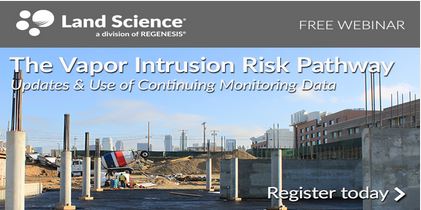
In this webinar we are pleased to have a special presentation by vapor intrusion experts Dr. Blayne Hartman of Hartman Environmental Geoscience and Dr. Mark Kram of Groundswell Technologies. During this webinar presentation, Dr. Hartman and Dr. Kram will discuss updates regarding the vapor intrusion risk pathway, as well as the use of continuing monitoring data. This live webinar starts Wednesday, October 17th, 2018 at 11am pacific/2pm eastern.

Featured Presenters
 Blayne Hartman, PhD Blayne Hartman, PhD
Hartman Environmental GeoScience
Dr. Hartman is a nationally recognized expert on soil vapor sampling, soil vapor analysis, and vapor intrusion. He has provided training on soil gas methods and vapor intrusion to state regulatory agencies in over 30 states. His organization, Hartman Environmental Geoscience, provides vapor intrusion, soil gas and analytical expertise and specializes in VI and soil gas training, real-time continuous monitoring of TCE & other VOCs in indoor air, and vapor intrusion regulatory guidance.
 Mark Kram, PhD Mark Kram, PhD
Groundswell Technologies, Inc.
Dr. Mark Kram is the Founder and CTO for Groundswell Technologies, Inc., a group specializing in automated Cloud based monitoring and modeling of environmental sensor and analytical instrumentation networks. Dr. Kram earned his Ph.D. in Environmental Science and Management from the University of California at Santa Barbara, an M.S. degree in Geology from San Diego State University, and his B.S. degree in Chemistry from the University of California at Santa Barbara. He has over 30 years of experience using innovative environmental assessment techniques, has authored articles, national standards and book chapters on the subject, and has taught graduate level courses on related topics. Dr. Kram is the recipient of the NGWA’s prestigious Technology Award, and received the 2014 ASTM Committee D18 Technical Editors Award.
When to Use Continuous Monitoring to Resolve Vapor Intrusion Challenges
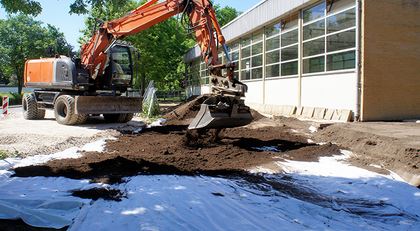
Several common questions arise when investigating a site for potential vapor intrusion related challenges. Often it is difficult to discern whether vapor intrusion is occurring and if so, where it is entering the building. Once vapor intrusion is discovered and mitigation ensues, an added concern is whether or not the mitigation achieved key risk reduction objectives or actually increased potential exposures. This guest blog post will explain when to use continuous monitoring to measure contaminant vapors in indoor air.

Webinar Recording Now Available
 and Institute of Environmental Health (IEH), at the <a href=) Oregon Health & Science University (OHSU). In this presentation he discussed in situ chemical reduction (ISCR), specifically with regard to its core concepts and their engineering implications. The full recording is now available here. Oregon Health & Science University (OHSU). In this presentation he discussed in situ chemical reduction (ISCR), specifically with regard to its core concepts and their engineering implications. The full recording is now available here.

Upcoming Events
 |
Northwest Remediation Conference
9/20/2018, Tacoma, WA
Visit conference website |
 |
First Annual Western Groundwater Congress
9/25 – 9/27/2018, Sacramento, CA
Visit conference website |
 |
34th Annual International Conference on Soils, Sediments, Water, and Energy
10/15 – 10/18/2018, Amherst, MA
Visit conference website |
 |
Florida Remediation Conference
12/5 – 12/6, Orlando, FL
Visit conference website |
|
|
|
|
|



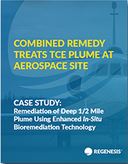





 Blayne Hartman, PhD
Blayne Hartman, PhD Mark Kram, PhD
Mark Kram, PhD
 and Institute of Environmental Health (IEH), at the <a href=) Oregon Health & Science University (OHSU)
Oregon Health & Science University (OHSU)



